Spring garden jobs: 20 simple outdoor tasks to get your plot summer-ready
Get outside and enjoy the warmer weather with our spring garden jobs – from painting and planting to sowing and tidying
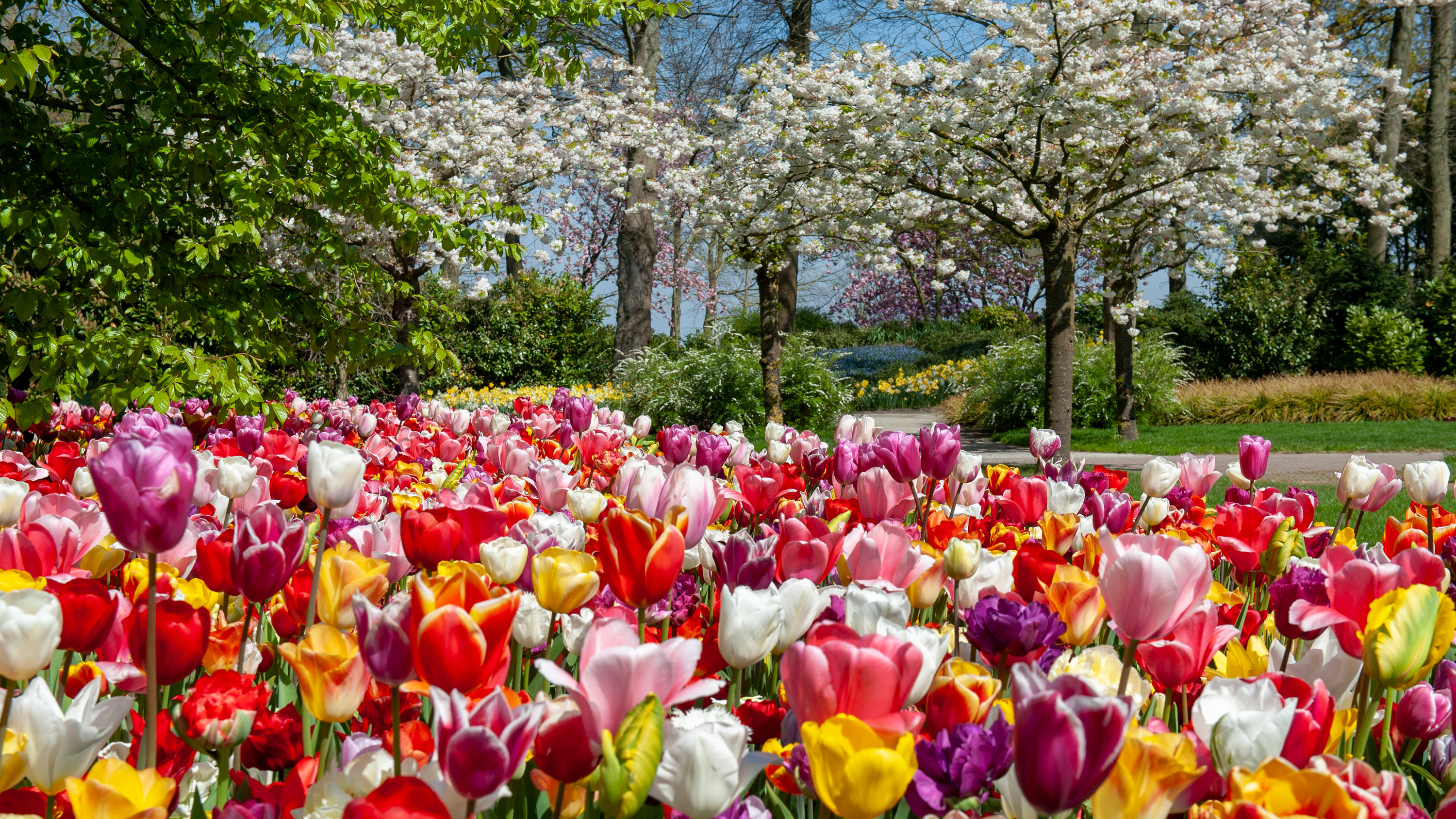
It's time to roll up the sleeves and get cracking with spring garden jobs. The lighter days and warmer air beckon us all outdoors, which is just as well, as there's plenty to do this season!
In fact, our spring garden ideas may already have you inspired to give your plot a freshen up. After all, you'll want to make sure your space is looking its best, ready to be used as an important extension of your home.
As Kate Walsh of Colourtrend, says, ‘now is the time to give your garden a little TLC, in preparation for the warmer months and outdoor living.' Whether that's by giving your furniture a chic new look, sowing flowers and veggies, or cleaning your patio – spring is the perfect time to get everything in order.
So keep reading for our advice on the spring garden jobs that should make it on your to-do list. None are too tricky, and they'll all help you get a show-stopping space this year.
1. Refresh your container plants

Give your pots a boost
Spring is, of course, the season of bulbs. Whether bold and vibrant or pastel-soft, the glossy likes of tulips, hyacinths and daffodils are a reliable way to bring joy to a space. And if you don't have room for borders or beds, then containers are a fabulous way to give a patio or terrace a boost.
If you didn't plan ahead and plant bulbs back in autumn, don't worry. Simply fill up your favourite pots with plants from the garden centre instead, to make a quick, and certainly show-stopping, display. Our guide on how to plant a last minute spring container will help you on your way.
Got other containers on the go? There's a few extra things you can do now warmer weather is here. First, 'make sure the soil hasn't dried out and give it a good soaking if so,' says Landscape Gardener and QVC's Gardening Expert Mark Lane. 'Next, remove the top 3-5 centimetres of soil and replace with fresh compost,' he continues. 'You can then put a final decorative stone on top to keep down the weeds and help keep moisture in.'
Mark also suggests to encourage winter pansies to flower again by deadheading them, which stops them from setting seeds.
2. Get your patio looking shipshape

The sun's out, the knitwear's off (for a few minutes at least), and your patio is looking a bit...lacklustre. But spring is a great time to give it a proper sort out, ready for lots of summer use.
Winter brings all kinds of grub and grime, so start by giving it a good clean. Sweep up those leaves and get it back to its former glory, perhaps with one of the best pressure washers. Our guide on how to clean a patio has all the tips you need.
Then, why not invest in some gorgeous new outdoor seating, or a table or bench? Our garden furniture ideas has lots of lovely designs to get you inspired. Or if you're happy with what you've already got, why not give it a spruce? Our guide on how to clean outdoor furniture is full of advice.
3. Give your lawn some TLC

Battleston Hill in spring at RHS Garden Wisley
Now the soil is warmer it's time to start thinking about your lawn. Once you're sure that the risk of frost has passed, you can brush off your best lawn mower and get going.
If it's been an unusually dry spring, the grass is probably looking very parched. Don’t panic! It will soon start to revive and re-green once there has been some rain. If you were planning to feed your lawn, wait until after the rain otherwise the fertilizer will scorch the grass.
In the meantime, edge around your lawn with shears or a half-moon tool to create an instantly sharper and neater look. It's a quick (and extremely satisfying) way to get a garden looking orderly.
Our spring lawn care tips has tons of advice to help you get your lawn looking its best this year.
4. Fill your borders with plants

The soil is warming up so fill borders with perennials and ornamental grasses
There is something so uplifting and optimistic about planting, and with longer, warmer days and warmer soil, your spring garden jobs are the perfect time to get stuck in!
Consider a mix of hardy perennials such as globe thistles, hardy fuchsias and echinacea mixed with elegant, frondy ornamental grasses including Miscanthus sinensis 'Morning Light', Pennisetum or the more compact, tufted Deschampsia cespitosa.
This is also the time to sow annual seeds, such as cornflowers, poppies and nigella directly into beds. Keep the soil damp while they germinate and thin them out as they grow if they look too crowded.
5. Update your furniture with a fresh new look
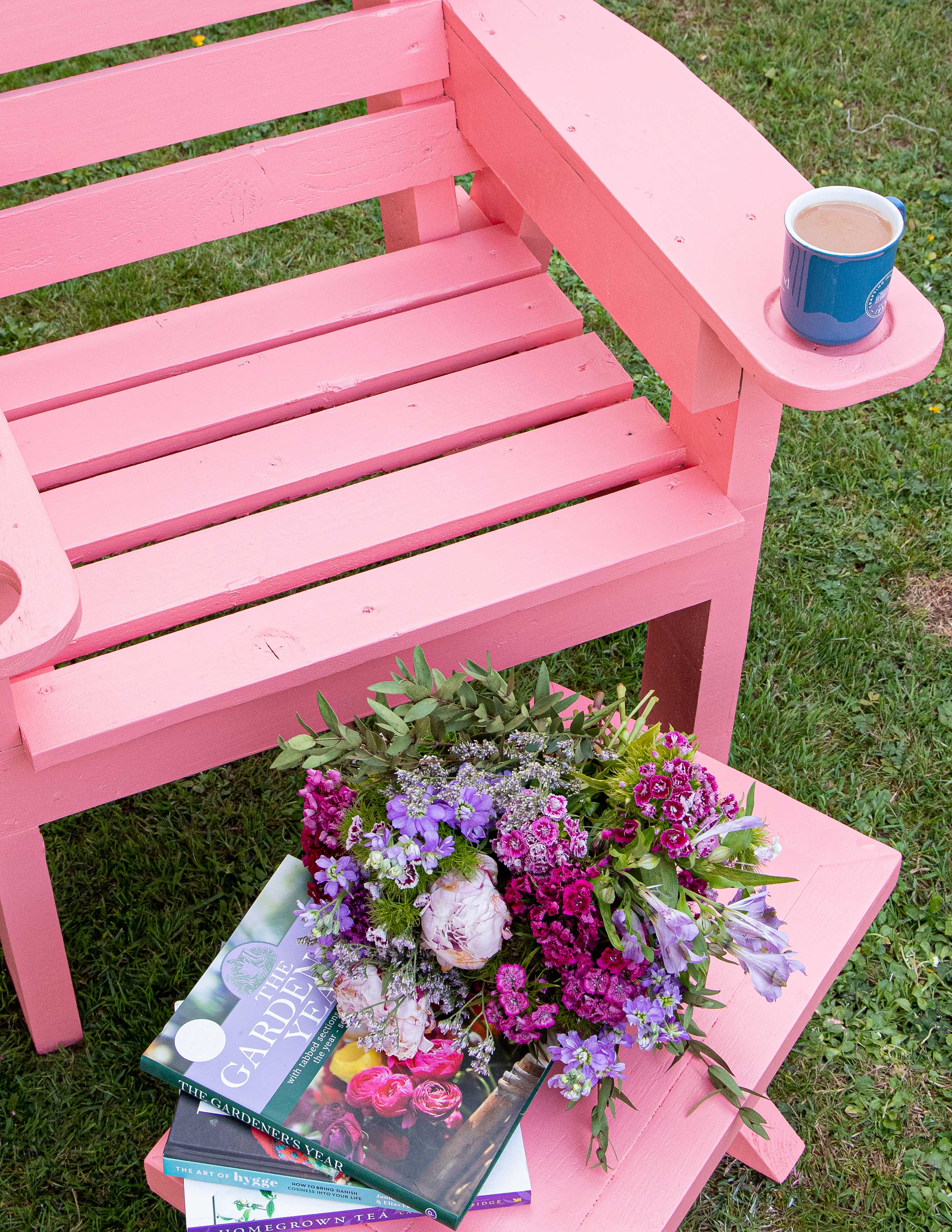
Chair painted in '1087 Bay Coral' in woodcoat finish from Colourtrend
Have you noticed that your natural wooden table and chairs are starting to look dull and grey, or maybe you painted them years ago and that shabby-chic look is now just shabby? Before you throw them away, try giving them a refresh, encourages Christine Gouldthorp of PrinceRunner. 'Invest in a power grinder or sander and take off those old layers of wood or paint,' she says. 'Think of your wallet and the environment – improve what you already have in your home.'
Kate Walsh of Colourtrend says that introducing colour to your outdoor space will add character and style. Whether you’re upcycling a piece of garden furniture, or giving tired flower pots a new lease of life, a lick of paint can really improve the overall look of your garden, she says.
‘Colourtrend’s Weather Collection is a selection of paints suitable for outdoor use, specially formulated to meet the demands of weather; both good and bad,' she adds. 'The earth pigments used to create the palette mean the colours blend beautifully into any setting, urban or rural and on all types of properties.’
There's tips on painting garden furniture in our step-by-step guide.
6. Paint the structures, too

Chimney painted in 'Joanna 130' intelligent masonry paint and fireplace surround in 'Aquamarine Deep 198' intelligent masonry paint, both from Little Greene
Of course, you needn't stop at giving your furniture a refresh for your spring garden jobs. Look to the larger features of your plot, too. A plain wall can be transformed with a bright new hue, and we adore the soothing tone of this outdoor fireplace.
And don't forget your fences. Give them a fresh coat of stain for the new season, or even a new lick of paint, to transform the overall look and feel of your garden, says Marcus Eyles, Horticultural Director at Dobbies. 'This is a nice job on a mild sunny afternoon – just be sure to check the weather forecast so you can plan painting around at least a few dry days either side.'
7. Harden off tender and young plants

Young and tender plants can be gradually accustomed to outside temperatures, but initially protect them at night
Start hardening off tender and young plants that you have grown indoors or in the greenhouse. Hardening off is the process by which they are acclimatized to life outside and you can begin this by placing them outside, but out of direct sunshine, during the day and bringing them in at night.
Do this for a week, then leave them out 24/7 with a nighttime covering of fleece or in a closed mini greenhouse or cold frame at night for the first week. After this they should be ready to plant out for the next phase of your spring garden jobs.
8. Patrol for pests

Pests emerge as the weather warms, so be ready to grab them!
The arrival of spring garden jobs means it’s time to start patrolling for pests. Warmer weather brings out the slugs, snails and aphids and they will be loving tucking into tender young leaves and shoots.
Make a ‘slug pub’ for snails: this is a pot filled with beer that’s sunk into the soil, with its rim standing proud of the surface so beneficial beetles and other ‘good’ critters don’t fall in and drown.
Snails and slugs will be able to though, and will die happy! Get rid of aphids by squishing small colonies of them between your (gloved) finger and thumb, before they bred and spread.
There's more tips on how to get rid of slugs in our guide.
9. Prune your roses (and your hydrangeas)

Early-on in spring is the best time to prune roses, up to late March. Giving them a trim will encourage more prolific displays in summer, and keep them healthy, too. And whilst you've got your best secateurs handy, don't forget to prune your hydrangeas as well (unless they're of the climbing variety).
Our guides on how to prune roses and how to prune hydrangeas are full of top tips.
10. Look after garden birds

Feed garden birds with nuts, seeds and fat balls and give them fresh water
Nesting and breeding takes a lot out of our garden birds, so make sure you provide them with a constant supply of nutritious, energy-packed foods and clean water to bathe in and drink.
The best food are fatballs, seeds and nuts from a nut feeder - never leave out whole peanuts as they are the right size to choke fledgelings.
Refresh birdbaths and drinking stations daily and clean away uneaten food before it can attract rodents or go mouldy.
11. Hedgehogs need your help

Hedgehogs are critically endangered but we can help them in our gardens
Hedgehogs are now on the Red List of endangered species and they need our help as gardens are increasingly becoming important sanctuaries for them.
Make helping them part of your spring garden jobs by leaving a patch of garden to grow wild so they have somewhere to hide, and by supplementing their diets with meat-based pet kibbles or specialist hedgehog food that’s widely available from pet shops and garden centers.
Avoid giving them mealworms as they will eat them before everything else, they have little nutritional value and can cause a disease that weakens bones in hedgehogs.
Leave out fresh water and cut CD-sized holes in your fence (and ask your neighbors if they will do the same) so hogs can forage and mate without needing to cross busy roads.
For further details about helping hedgehogs visit Hedgehog Street, the website of the British Hedgehog Preservation Society, plus check out our wildlife garden ideas for more ways to encourage creates and small into your garden.
12. Prune early-flowering shrubs

Prune early-flowering shrubs such as forsythia in spring, never leave it until autumn
Cut back your early-flowering shrubs such forsythia, winter jasmine and Philadelphus (mock orange) as soon as they have finished flowering. This will give theme as much time as possible to produce new growth that will bear next year’s blossom.
These shrubs bloom on stems grown the previous year, so if we pruned them in the autumn like most other deciduous shrubs, we would simply take away the growth they have put on this year that will be laden with color next spring.
After pruning, your spring garden jobs aren't finished there. Always remember to feed with Vitax Q4, Growmore or blood, fish and bone, water it in and mulch with well-rotted compost or manure.
Our guide on how to prune forsythia is packed with useful tips on how to get the best results.
13. Deadhead your daffodils and tulips
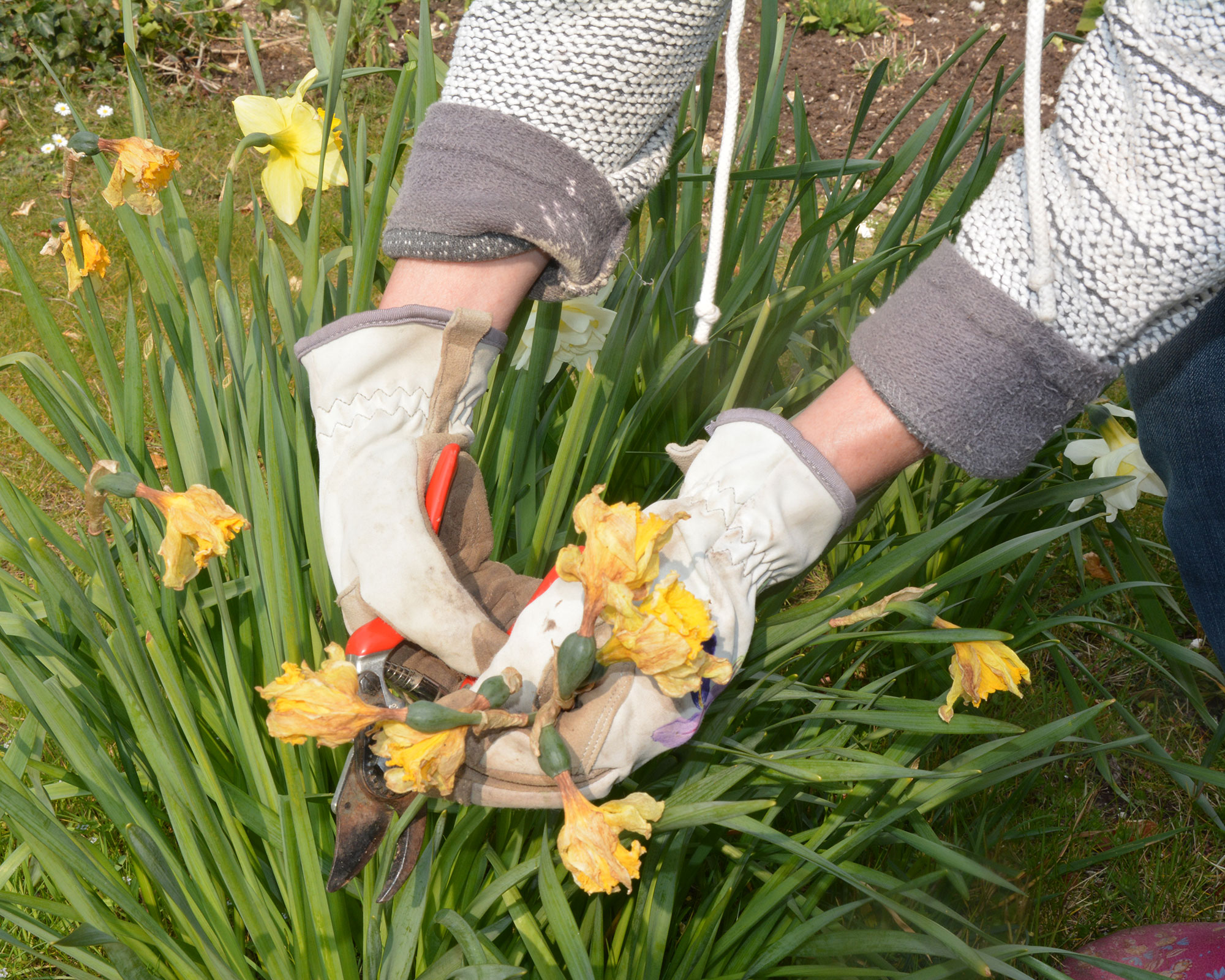
Deadhead spring bulb flowers so their energy is returned to the bulbs instead of going towards making seeds
Deadhead spring-flowering bulbs such as daffodils and tulips as part of your spring garden jobs, then let their leaves die down naturally without tying or cutting them.
As they wither, the greenery returns energy to the bulbs for next year’s flowering and if leaves are removed or knotted, it hinders this process and you won’t get as many flowers next year. Remember to water and feed the bulbs with tomato fertilizer as they die back.
You can also lift and store any bulbs you want to move elsewhere, or to make room for new plantings in containers. Carefully fork them up and leave them to dry for a day or two before storing somewhere cool and dry, ready for replanting in the autumn.
14. Sort out your shed

Give your garden shed a new lease of life
Have our shed ideas got you inspired to give yours a proper sort out? Whether it's a fresh coat of paint, or a thorough clean and sort, a shed spring clean is a brilliant task to add to your list of spring garden jobs.
Start by giving it a sweep, wiping away cobwebs, and fixing any gaps in the walls or windows. Then, think about investing in some shed storage ideas, to make sure all your garden accessories have a proper place.
If you want to give it an extra layer of protection, or a summery new look, our guide on how to paint a shed has the advice you need. We're loving this turquoise hue against the nearby blooms, whilst the green window frames tie in beautifully with surrounding foliage.
15. Plant summer bulbs
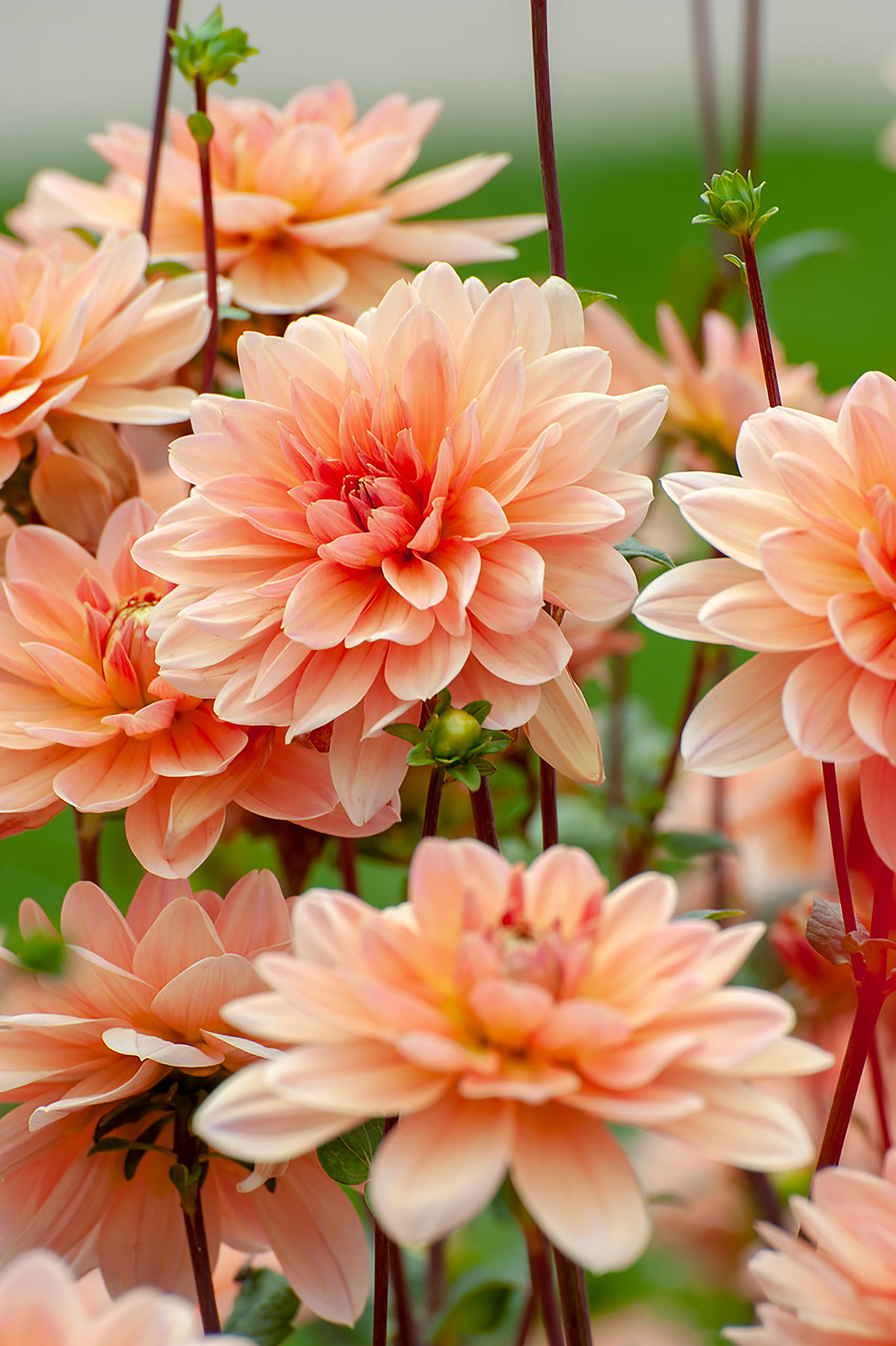
Think ahead to summer blooms, such as these stunning Dahlias
Tons of blooms burst into action come spring, but don't forget to think ahead to summer flowers, too. Whether you're a keen gardener, a beginner, or a plantaholic, planning ahead is key, says QVC's Gardening Expert Mark Lane. 'So, start ordering your summer bedding plants or hanging baskets and think about what you want to grow this year.'
As Marcus Eyles, Horticultural Director of Dobbies says, 'Spring is the perfect time to plant your beautiful summer flowering bulbs such as Gladiolus and lilies.'
'Dahlias and Begonias should also be started now too, however these should be started off in pots under the protection of any early spring frost, in a greenhouse or potting shed,' Marcus says.
Head over to our guide on how to grow dahlias for more advice.
16. Mulch your borders

Prepare your borders and beds
One of the most worthwhile spring garden jobs to be cracking on with is to mulch. This will give all your beloved plants a strong start for the growing season.
I love to give my plants a helping hand at this time of the year, says Landscape Gardener and QVC's Gardening Expert Mark Lane. Try and get into the habit of digging in a 5cm layer of compost or well-rotted manure, as well as organic fertiliser, into your beds and borders he says.
'Trees, shrubs, hedges and roses will grow well if a slow-released fertiliser is gently forked in around the plant,' Mark adds. 'Trust me, your plants will love you for this!'
Head over to our ultimate guide to mulching to find all the advice you need.
17. Get busy in the greenhouse

Start making the most of your greenhouse this season. For flowers, the experts at Suttons say that half-hardy annuals such as Impatiens, Cosmos, Gazania, Petunia, Lobelia and Calendula can be sown in a heated greenhouse (or indoors) in March.
In terms of vegetables, they also recommend to sow aubergine and cucumber seeds, along with other tender vegetables, in a heated greenhouse in March. During March and April, celery seed can also be sown into pots in the greenhouse, ready to be planted out in May and June.
April is the time to sow marrows, courgettes, pumpkins, squashes and tomatoes in a heated greenhouse or propagator, they add.
18. Grow your own summer berries

Think about growing summer fruit this season
'Plant soft fruit now, such as raspberries, blackcurrants and blueberries,' says Horticultural Director at Dobbies, Marcus Eyles. 'Mulch existing rows of raspberry canes and fruit bushes,' he adds.
Now's also the time to plant rhubarb. 'Remember to allow enough room for them to develop to their full size,' Marcus says. 'Add a thick layer of farmyard manure around your new plant to help retain moisture and keep weeds at bay.'
Garden landscaper and QVC's Gardening Expert Mark Lane says, 'I love strawberries in summer, but you can encourage earlier fruiting by covering the strawberry plant with a cloche just as the flowers begin to set.'
'Watch out for mildew and other fungal diseases which can grow under cloches by providing ventilation during the middle part of the day, where possible,' he adds.
Head over to our guides on how to grow raspberries and how to grow strawberries for more info.
19. Plant an early summer container
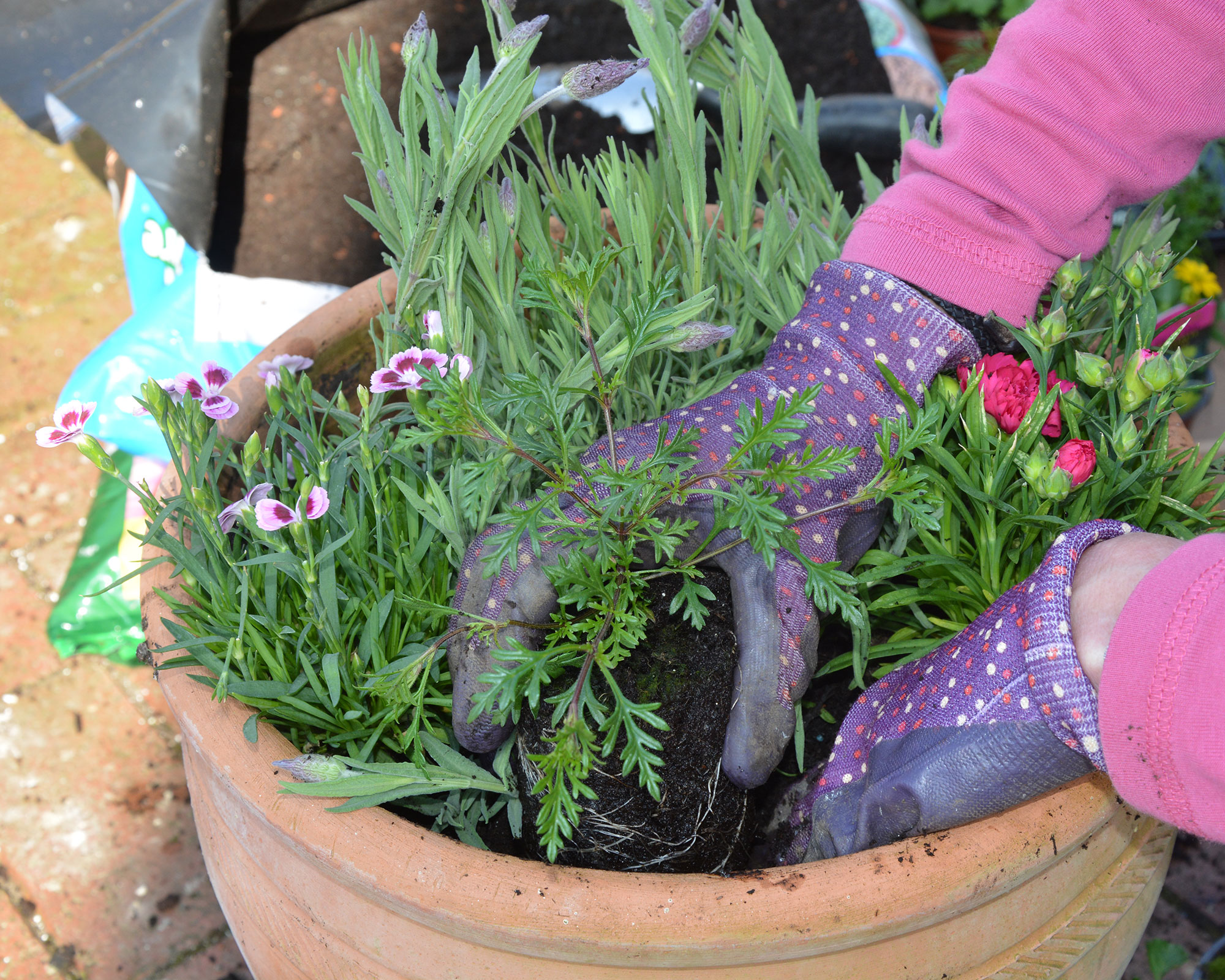
A patio pot of scented flowers and greenery is a simple and stunning way to add garden interest. This summer container is filled with lavender, dianthus and other summer flowers
Create an early summer container using a mix of plants. Mix bedding such as petunias, busy lizzies, calibrachoa and lobelia with plants that have interesting foliage. Ivy, hostas and silver-leaved cineraria provide a perfect contrast for more showy summer blooms.
Night frosts can still occur, so if one is forecast either move your pot into a greenhouse or somewhere sheltered or cover it with horticultural fleece.
20. Be water-wise

Having several waterbutts makes watering easier and saves you money
Think about watering and storing water as part of your spring garden jobs. Consistently dry springs mean that by the time high summer arrives the garden is suffering. Attaching water butts to downpipes coming from the house, garage, shed and greenhouse is a great way of harvesting rainwater, which is actually better for plants than chlorinated tap water.
You can also recycle ‘grey water’ for watering. This is washing up water that isn’t too contaminated by food debris or bleach, and it is fine for ornamental plants as well as edible ones.
Another one of our garden water saving tips is to collect the water that runs while you wait for the hot tap to heat up - you will be amazed how much you can collect in a day – and it’s better than wasting it down the drain!
What flowers can I sow outdoors in spring?

Spring offers tons of colourful blooms, but don't forget to think ahead, too
One of the best spring garden jobs is to sow flowers from seeds, to provide your garden with colourful (and affordable) blooms come summer. If soil conditions aren't too cold or wet, hardy annuals can be sown outdoors in March, says Suttons. These include the likes of poppies and cornflowers. You can also sow Anchusa, Calendula, Clarkia, larkspur and Nigella, they add.
April is often the time to plant out sweet pea seedlings, or they can be sown directly into their final flowering position, Suttons adds. Our guide on how to grow sweet peas is a good place to start if you want to bring these gloriously fragranced flowers to your garden.
What vegetables can I sow outdoors in spring?
When the ground is no longer wet and soggy, you can start making early vegetable sowings in your raised beds or borders. Do so by warming up the soil beforehand using cloches or Envirofleece, says the team at Suttons. This will help to ensure good seed germination results.
Try artichokes, beetroot, broad beans, Brussels sprouts, cabbages, cauliflowers, carrots, lettuces, parsley and spinach, they suggest. Shallot sets can also be planted in March – space them in intervals of 15cm (6″) intervals in rows that are 30cm (12″) apart. Onion sets may also be planted towards the end of the month, when the temperatures are a little warmer, they add.
In April, you can direct sow carrots, peas, beetroot, winter cabbages, broccoli, salad crops and more, Suttons says. Don't forget herbs, too – try dill, fennel, hyssop, parsley and thyme. Our tips on how to create a herb garden will give you a helping hand.
You can continue to sow delicious crops when May arrives, either straight outside or under cloches, Suttons adds. Try radishes and swede.

Ruth is the gardening editor of Amateur Gardening magazine and spends her working days carrying out, writing about and photographing the tasks the readers should be carrying out each week, as well as testing many of the new products that arrive on the gardening market. She is horticulturally trained, with a qualification from the Royal Horticultural Society.

